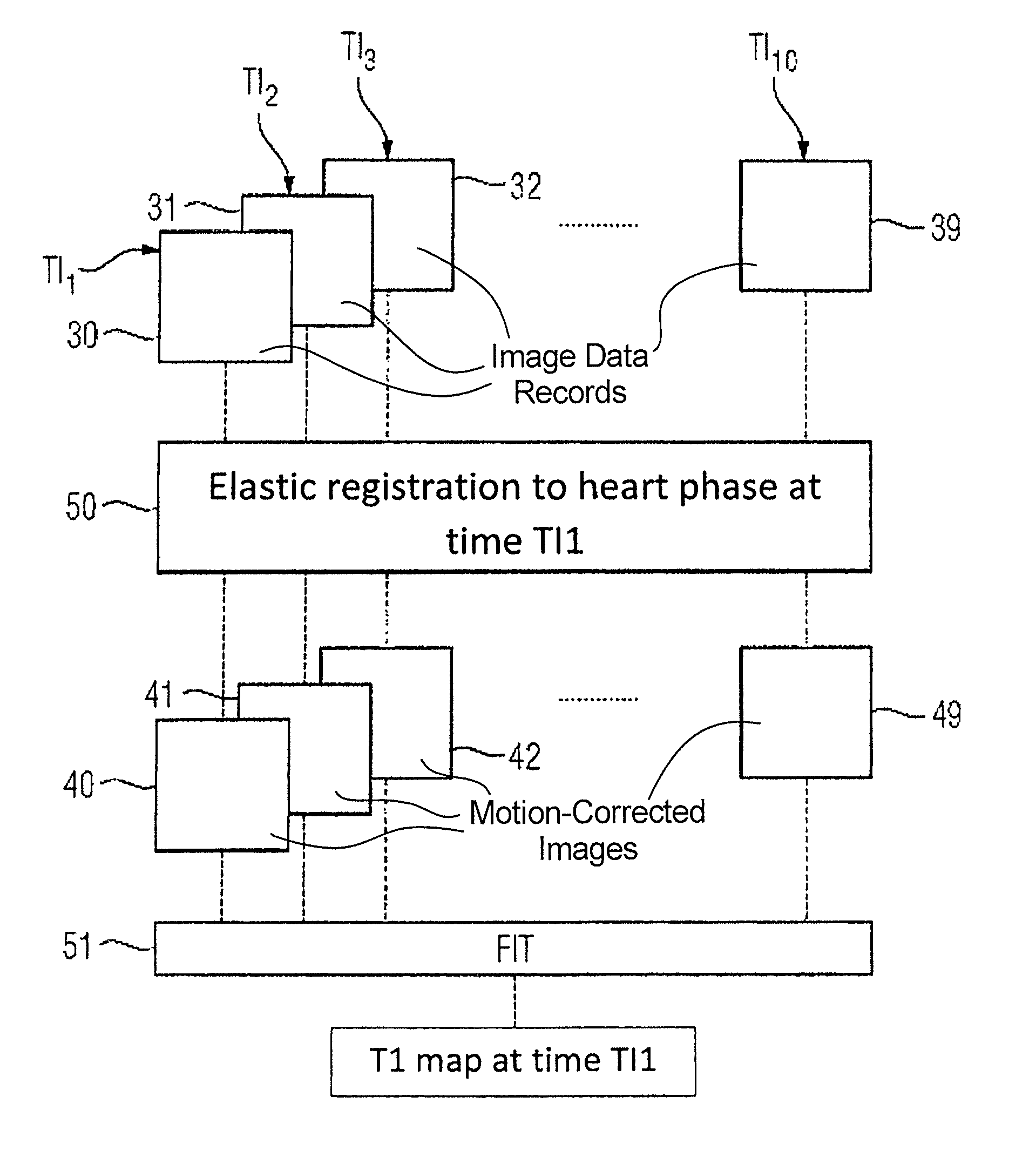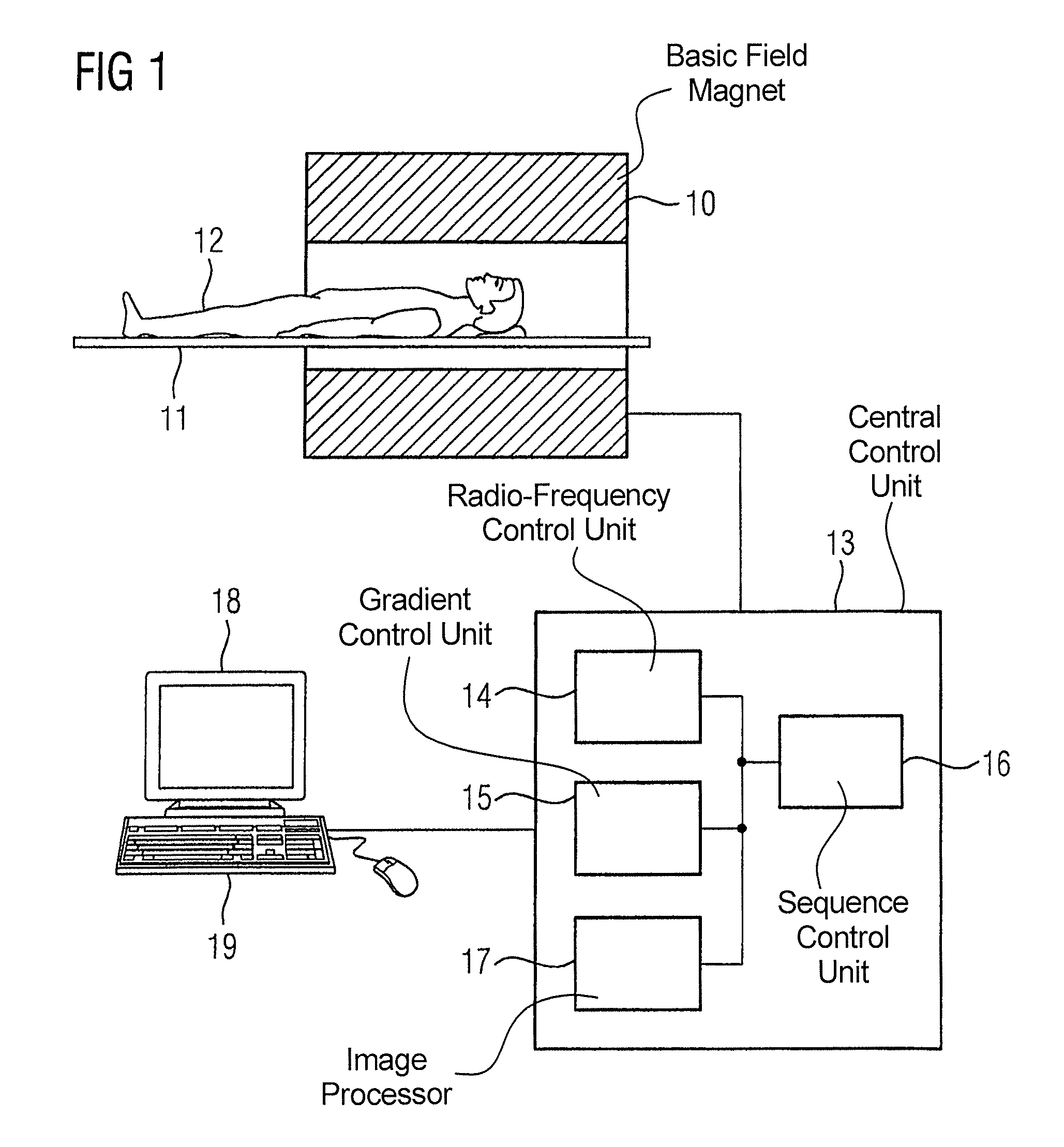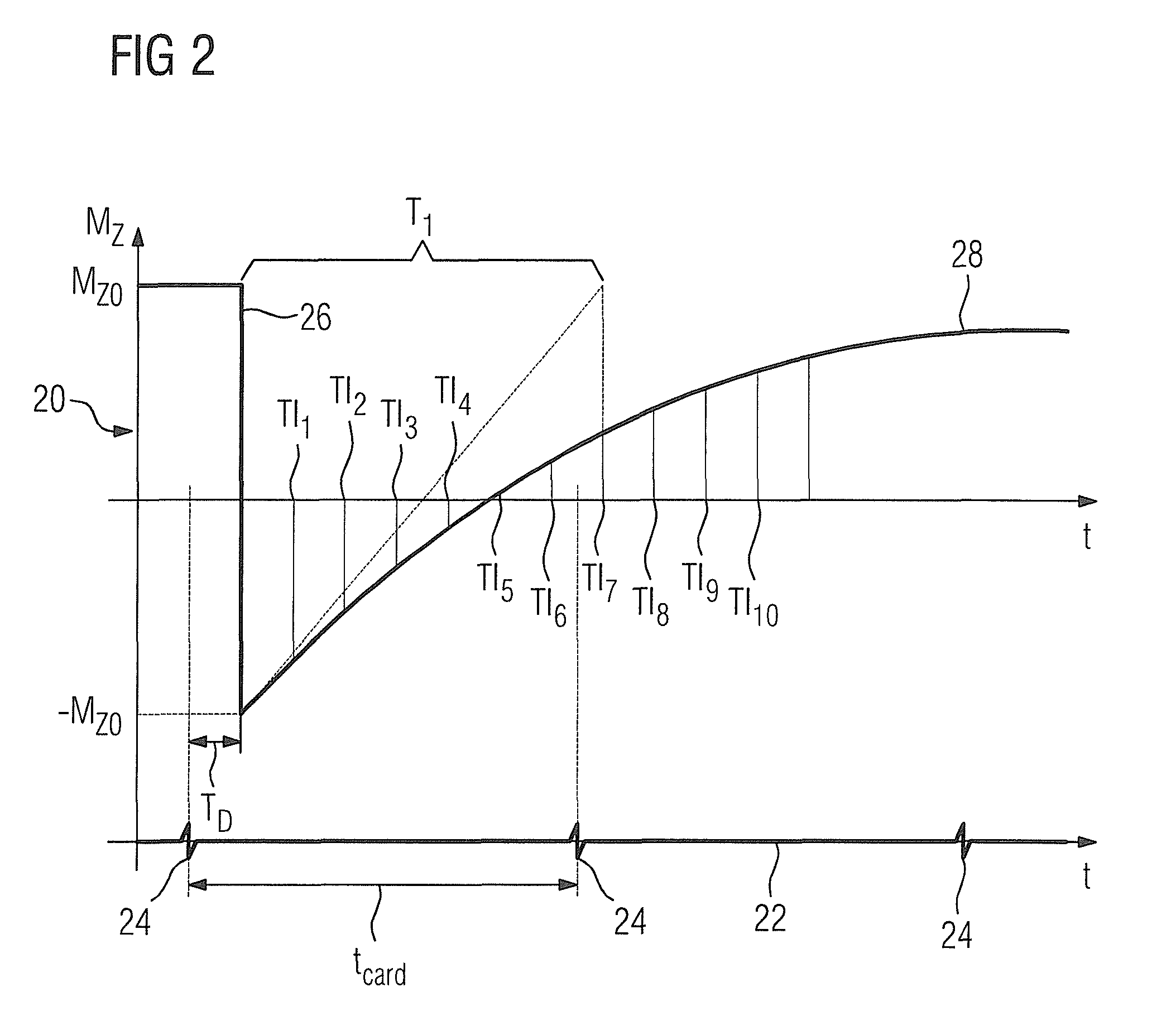Method for a rapid determination of spatially resolved magnetic resonance relaxation parameters in an area of examination
a technology of spatial resolution and relaxation parameter, applied in the field of rapid determination of spatial resolution magnetic resonance relaxation parameter, can solve the problems of motion artifacts, difficult long-term relaxation, and major challenge in determining the constant of tb>1/b> of heart tissue,
- Summary
- Abstract
- Description
- Claims
- Application Information
AI Technical Summary
Benefits of technology
Problems solved by technology
Method used
Image
Examples
Embodiment Construction
[0030]FIG. 1 shows schematically a diagnostic magnetic resonance apparatus, with which magnetic resonance relaxation parameter maps can be generated. Magnetic resonance relaxation parameter maps show, spatially correctly, the regional distribution of the values of magnetic relaxation constants an area of examination. With the so-called late-gadolinium enhancement examinations (LGE examinations) of the heart is of particular interest the regional distribution of the longitudinal relaxation constant T1.
[0031]The magnetic resonance apparatus has a basic field magnet 10 for the generation of a polarizing field B0, wherein a person 12 to be examined is supported on a table 11 and is moved into the center of the magnet 10 so that spatially encoded magnetic resonance signals can be received from the area of examination. Radiation of radio-frequency pulse sequences and switching of magnetic field gradients allow the magnetization of the nuclear spins to be tilted (“flipped”) out of the alig...
PUM
 Login to View More
Login to View More Abstract
Description
Claims
Application Information
 Login to View More
Login to View More - R&D
- Intellectual Property
- Life Sciences
- Materials
- Tech Scout
- Unparalleled Data Quality
- Higher Quality Content
- 60% Fewer Hallucinations
Browse by: Latest US Patents, China's latest patents, Technical Efficacy Thesaurus, Application Domain, Technology Topic, Popular Technical Reports.
© 2025 PatSnap. All rights reserved.Legal|Privacy policy|Modern Slavery Act Transparency Statement|Sitemap|About US| Contact US: help@patsnap.com



